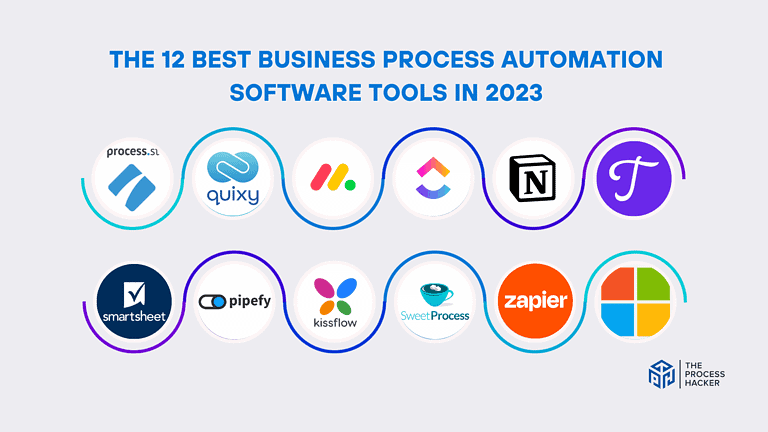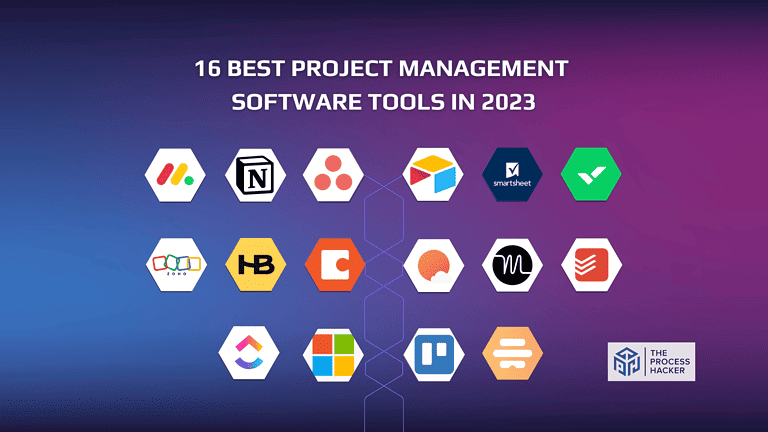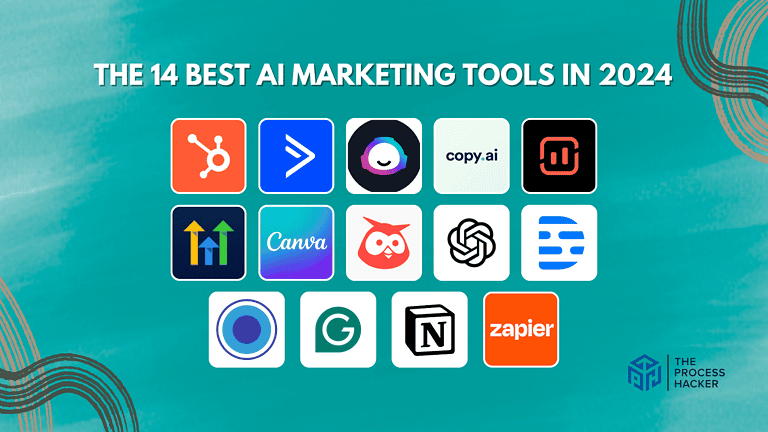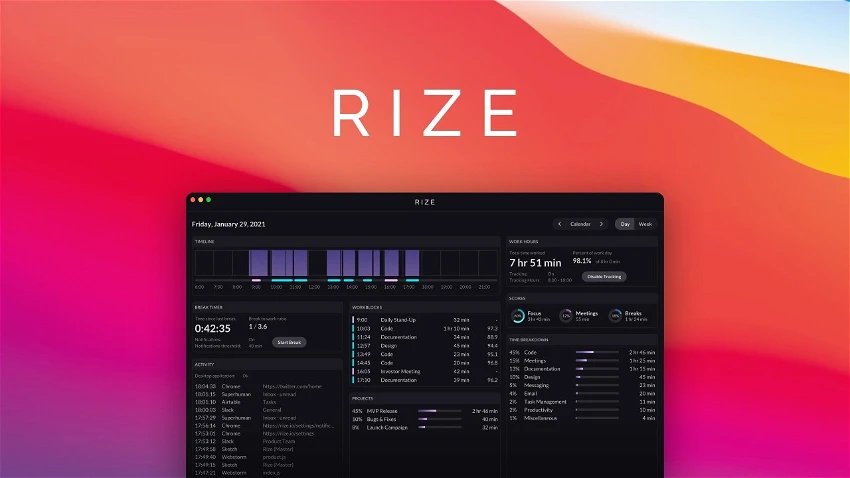Revolutionizing Business: Mastering Generative AI Workflows for Entrepreneurs
Did you know that businesses using generative AI workflows are 3.5 times more likely to achieve breakthrough innovations? As an entrepreneur, you’re always looking for that edge to propel your business forward. Well, guess what?
Generative AI workflows are here, and they’re a game-changer! Imagine cutting your workload in half while doubling your creative output. Picture yourself making data-driven decisions with lightning speed and accuracy.
That’s the power of generative AI workflows! In this comprehensive guide, we’ll dive deep into the world of generative AI workflows, showing you exactly how to harness this technology to supercharge your business.
Ready to become a trailblazer in your industry? Let’s get started!
What are Generative AI Workflows?
Generative AI workflows are structured processes where you leverage the creative capabilities of artificial intelligence (AI) to produce valuable outputs. Think of it like an assembly line, but instead of physical products, you’re generating everything from compelling marketing copy to photorealistic images, even functional code snippets.
These workflows go beyond one-off AI interactions. They strategically combine different AI tools and techniques to achieve complex goals. For example, one AI could brainstorm ideas, another refine them into polished text, and yet another create accompanying visuals.
Mastering these workflows is critical for any entrepreneur looking to stay ahead. They enable you to automate tedious tasks, unlock new levels of creativity, and ultimately deliver faster results.
How Generative AI Differs from Traditional AI Systems
While traditional AI has been a valuable tool for tasks like automation and data analysis, generative AI takes things to a new level. Think of conventional AI as a highly-skilled assistant who follows instructions and recognizes patterns. It can analyze vast amounts of data to identify trends, make predictions, or automate routine tasks.
Generative AI, on the other hand, is more like a creative partner. It doesn’t just process existing information; it generates entirely new content. This could be anything from writing blog posts and composing music to designing logos and generating functional code.
The key difference lies in their outputs. Traditional AI systems typically provide insights or actions based on the data they’ve been trained on. Generative AI, however, produces original and often surprising results that push the boundaries of what’s possible.
What are the Benefits of Using Generative AI In Your Workflow
Businesses and individuals can enjoy the fantastic benefits below by harnessing the power of generative AI.
Personalized Product Offerings
Every product associated with your business should address customers’ pain points to strengthen your brand’s reputation and boost sales. Clients expect every product you recommend from your catalog or associates to satisfy their wants and solve their problems.
You want to understand the needs of the many customers engaged on your social media, website, blog, and affiliate programs. Generative AI services can streamline the process by producing precise data about customer feedback, browsing history, and purchase patterns.
You can use this data to personalize product recommendations and improve customer experiences. Utilize AI to categorize customers, customize product features, and enhance marketing campaigns. This will boost customer loyalty and engagement, making consumers feel valued.
Helps Ace Compliance
Businesses must adhere to regulatory requirements, which often change. Keeping up with these changes manually is time-consuming and prone to errors. To tackle this challenge, you can use generative AI to automate compliance checks and receive real-time updates.
This reduces human errors, ensures compliance, and allows easy tracking across different workflow sectors. By doing so, you can identify non-compliance issues early, making it easier to address them and reducing the administrative burden on your compliance teams while avoiding legal issues and penalties.
Optimizes Strategy Development
Projects aligned with clear goals tend to produce great results because allocating resources and carrying them out is easier. By incorporating generative AI into your business, you can streamline and strengthen your strategy development by sorting and validating goals through analyzing large datasets.
This allows you to prioritize initiatives with the highest potential returns on investment and speed up project timelines. Making data-driven business decisions involves accessing actionable insights and predictive analytics to reduce assumption-based decisions, enabling well-informed choices that align with long-term objectives.
Makes Your Business a Frontrunner
Staying ahead of the curve is crucial in today’s highly competitive industry. Streamlining workflows is essential for your company to maintain its edge, as sluggish processes can hold you back. By harnessing the power of generative AI, you can tailor solutions to meet both client and employee needs, setting your company apart from the competition.
These innovative AI-driven solutions have the potential to not only enhance operational improvements and product offerings but also position your enterprise as a trailblazer in the industry. Generative AI allows for the creation of unique products and strategies that align with market demands and spark real growth within your company.
Improved Analytics
Understanding and leveraging your business data is crucial for optimizing workflows and gaining insights into employee performance and company operations. With generative AI, you can efficiently analyze vast datasets to uncover valuable information about employee performance, transactional patterns, and potential anomalies.
These insights can guide critical decision-making processes and investment strategies while shedding light on existing and potential risks and opportunities. Using data extraction and visualization tools, you can transform complex data into easily digestible segments, providing intuitive reports and dashboards that reveal key metrics and trends essential for strategic planning and operational efficiency.
The Power of Generative AI Tools for Entrepreneurs
Let’s face it: in the fast-paced business world, time is your most valuable asset. Generative AI tools offer entrepreneurs a unique advantage by automating tasks that would otherwise consume countless hours.
Imagine generating compelling marketing copy in minutes, creating eye-catching visuals without any design experience, or even automating parts of your customer service interactions. These tools aren’t just about saving time; they’re about empowering you to focus on what truly matters – growing your business.
Exploring Popular Generative AI Tools
The generative AI landscape is brimming with innovative tools, each with its unique strengths. Whether you’re looking to generate text, images, or even music, a generative AI tool can help.
The possibilities are endless, from well-known options like ChatGPT and DALL-E 2 to specialized tools tailored for specific industries. It’s about finding the right tools to fit your needs and seamlessly integrate into your workflow.
Overview of top-gen AI tools for business:
- Text Generation: ChatGPT, Jasper
- Image Generation: DALL-E 2, Midjourney, Stable Diffusion
- Code Generation: GitHub Copilot, Tabnine, Codeium
- Video Generation: RunwayML, Synthesia, Pictory.ai
- Audio Generation: Murf.ai, Descript, ElevenLabs
Integrating AI Tools into Existing Workflows
Successful integration is key to maximizing the benefits of generative AI. It’s not about replacing your existing processes but enhancing them with AI capabilities.
Think of it as adding a turbocharger to your workflow. By strategically incorporating AI tools into your day-to-day operations, you can streamline complex tasks, boost productivity, and unlock new levels of creativity.
Overcoming Common Implementation Challenges
While the potential of generative AI is undeniable, implementation can come with challenges. There are hurdles to overcome, from data privacy concerns to the learning curve associated with new technologies.
But don’t let these challenges deter you. With careful planning, the right resources, and a willingness to adapt, you can successfully navigate the implementation process and reap the rewards of generative AI.
Case Studies of Successful AI Tool Integration
Real-world examples highlight the tangible benefits that businesses are already experiencing through AI adoption:
Marketing teams have harnessed AI-powered content creation tools to increase their output and audience engagement significantly. The ability to generate high-quality blog posts, social media captions, and email campaigns at scale has freed up valuable time for strategizing and creative ideation.
Customer support teams have embraced AI chatbots to respond instantly to common inquiries, dramatically improving response times and overall customer satisfaction. This allows human agents to focus on complex issues, delivering a more personalized and efficient support experience.
Sales teams are leveraging AI for lead generation and qualification, accelerating the process of identifying and nurturing promising prospects. By automating data analysis and providing intelligent insights, AI empowers sales professionals to prioritize their efforts and close deals faster.
Revolutionizing Content Creation with Generative AI
Content is king, but creating high-quality, engaging content that resonates with your audience can be time-consuming and resource-intensive. This is where generative AI offers a powerful suite of tools to streamline and elevate your content creation process.
Generating Human-like Text at Scale
AI-powered writing assistants are becoming indispensable for generating blog posts, social media content, and more. These tools help overcome writer’s block and efficiently create drafts and content outlines.
Moreover, AI’s ability to repurpose content into various formats, like transforming a blog post into a social media thread, provides immense flexibility. You can also personalize content based on specific audience segments and expand your global reach by translating content into large language models.
Enhancing Visual Content with AI-Powered Tools
AI is revolutionizing visual content creation. Tools like the best AI image generators enable the creation of unique images, illustrations, and graphics, while AI-powered editing tools can enhance existing images, remove backgrounds, or add elements.
Video creation is also being transformed, with AI enabling video generation from text prompts or repurposing existing content into video format. Additionally, AI automates video editing tasks like trimming, adding captions, and creating highlights, significantly streamlining the process.
Maintaining Brand Voice and Quality Control
While AI offers powerful content creation capabilities, maintaining brand consistency is paramount. Providing AI tools with clear prompts and guidelines that reflect your brand’s unique tone and style is crucial.
Where possible, fine-tune AI models on your existing content to further align them with your brand voice. Human oversight is essential; always have a person review and edit AI-generated content to ensure accuracy and brand consistency. Developing brand guidelines and templates can also be a valuable reference for AI tools.
Even with AI’s advancements, the human touch remains vital. Carefully proofread and fact-check AI-generated content to eliminate errors, ensure accuracy, and make it seem like you generate human-like text. Infuse your personality and creativity into the content to make it more engaging and authentic.
Streamlining Operations through Workflow Automation
Efficiency is the cornerstone of any successful business. Automating repetitive tasks frees up valuable time, reduces errors, and boosts overall productivity. Generative AI takes this further by intelligently handling complex workflows, enabling you to focus on strategic initiatives and innovation.
Identifying Repetitive Tasks for Automation
The first step to successful automation is identifying the right tasks for AI. Here’s a checklist to help you pinpoint those prime candidates:
- Frequency: How often is the task performed? The more frequent, the greater the potential benefit from automation.
- Complexity: Is the task rule-based and predictable? AI excels at automating tasks with clear patterns.
- Time Consumption: How much time does the task take? Automating time-consuming tasks can yield significant time savings.
- Error-Prone: Is the task prone to human error? Automation can minimize mistakes and improve accuracy.
- Value-Add: Does the task directly contribute to your core business goals? Prioritize automating tasks that don’t require human creativity or decision-making.
Implementing AI-Driven Workflow Automation
Step-by-step guide to setting up AI-powered workflow automation:
- Map Your Workflow: Clearly define the steps involved in the process you want to automate.
- Choose the Right AI Tools: Select AI solutions that align with your specific workflow requirements.
- Integrate with Existing Systems: Ensure seamless data flow between your AI tools and other business applications.
- Test and Refine: Thoroughly test the automated workflow and adjust as needed.
- Monitor and Optimize: Continuously track performance and identify areas for further improvement.
Measuring the Impact on Productivity and Efficiency
Once you’ve implemented AI-driven workflow automation, tracking its impact on your business is essential. Key metrics to focus on include the time saved through automation, the reduction in errors and rework, and the cost savings achieved, such as reduced labor costs.
Additionally, it assesses how automation influences employee morale and job satisfaction and any improvements in the quality and consistency of outputs.
Leveraging Generative AI for Market Research and Insights
Market research is the backbone of informed business decisions. However, traditional methods can be time-consuming and costly. Generative AI offers a powerful alternative, enabling you to analyze vast amounts of data, uncover hidden patterns, and gain valuable insights quickly and efficiently.
Analyzing Market Trends with AI
Here are the tools and techniques to make the most out of AI-powered market analysis:
- Social Listening: Use AI to monitor social media conversations, identify trends, and understand customer sentiment.
- Sentiment Analysis: Analyze customer reviews and feedback to gauge brand perception and product satisfaction.
- Competitor Analysis: Track competitor activity and identify opportunities for differentiation.
- Predictive Analytics: Forecast future market trends and anticipate customer behavior using AI models.
Generating Actionable Business Insights
Translating AI-generated data into actionable insights is key to unlocking its true potential. Begin by identifying key patterns and recurring themes within the data. Then, prioritize insights based on their potential impact on your business goals.
Develop clear and actionable plans based on these insights, and don’t be afraid to experiment and iterate based on the results you achieve. This iterative approach allows you to refine your strategies and continuously maximize their effectiveness.
Enhancing Decision-Making Processes
Integrating AI insights into your decision-making framework empowers you to make more informed and strategic choices. Embrace a data-driven approach, leveraging AI insights to guide strategic and tactical decisions. AI can also help identify potential risks and develop mitigation strategies, enabling you to address challenges proactively.
Furthermore, AI can uncover new market opportunities and growth areas you might have overlooked. By staying agile and adaptable, you can respond swiftly to changing market conditions based on AI-driven insights, ensuring your business remains competitive and resilient.
Enhancing Customer Experience with Generative AI
Exceptional customer experience is the lifeblood of any thriving business. Generative AI empowers you to deliver personalized interactions at scale, exceeding expectations and fostering lasting loyalty.
Personalizing Customer Interactions at Scale
AI enables you to create tailored experiences for each customer, even as your business expands. Utilize AI to analyze customer data and provide personalized product suggestions, content recommendations, and offers that resonate with individual preferences.
Implement AI-driven dynamic pricing strategies to offer customized discounts and promotions based on specific customer behavior and preferences. Further personalize your communication by leveraging AI to create targeted email campaigns, social media messages, and other interactions that truly connect with individual customers.
Implementing AI-Powered Chatbots and Virtual Assistants
AI chatbots and virtual assistants can revolutionize customer service. To successfully implement them, start by defining your goals – what tasks do you want the chatbot to handle? Whether answering FAQs, providing customer support, or processing orders, having a clear objective is crucial.
Next, choose a chatbot platform that aligns with your needs and integrates seamlessly with your existing systems. Train your chatbot with relevant data and information to ensure accurate and helpful responses. Remember, ongoing monitoring and optimization are key to ensure the chatbot continues to meet evolving customer needs and expectations.
Predicting and Meeting Customer Needs
AI can proactively anticipate and fulfill customer needs. By leveraging predictive analytics, you can forecast customer behavior and identify potential needs before they arise.
Sentiment analysis of customer feedback and social media conversations helps pinpoint pain points and areas for improvement. You can even use AI to identify customers at risk of churn and offer personalized support and solutions, fostering loyalty.
To measure the success of your efforts, track key metrics such as Net Promoter Score (NPS), Customer Satisfaction Score (CSAT), Customer Effort Score (CES), and Churn Rate.
Optimizing Resource Allocation with AI Workflows
Efficient resource allocation is critical for maximizing profitability and staying ahead of the competition. AI workflows empower you to predict resource needs, automate cost management, and balance human expertise and AI capabilities harmoniously.
Predicting Resource Needs with Machine Learning
AI-powered machine learning enables you to forecast resource requirements with greater accuracy. By analyzing historical data and market trends, you can predict future demand for products or services, ensuring you’re prepared to meet customer needs.
AI can also optimize inventory levels, striking the perfect balance between having enough stock to meet demand without overstocking. Additionally, you can forecast staffing needs based on anticipated workload and project timelines, ensuring the right people are in place at the right time.
Automating Cost Management and Budgeting
AI tools offer potent solutions for streamlining cost management and budgeting. Automate expense tracking and categorization to identify areas for cost reduction.
Anomaly detection can flag unusual spending patterns and potential fraud, safeguarding financial resources. Moreover, AI models for budget forecasting can help predict future expenses and create more accurate budgets.
Balancing Human Expertise with AI Capabilities
The true power lies in combining human expertise with AI capabilities. Embrace augmented intelligence, where AI enhances human decision-making and problem-solving abilities. Design collaborative workflows that leverage the strengths of both humans and AI, working together seamlessly.
Invest in upskilling and reskilling your team, equipping them with the skills to work effectively alongside AI. Real-world examples, such as AI assisting radiologists in healthcare, AI-powered robots collaborating with humans in manufacturing, and AI chatbots handling routine customer inquiries, showcase the potential of this harmonious partnership.
Scaling Your Business with Generative AI Workflows
As your business grows, so too must your AI workflows. By adapting your AI strategy, overcoming scalability challenges, and future-proofing your approach, you can ensure that AI continues to drive growth and innovation.
Adapting AI Workflows for Growth
To scale effectively, build AI workflows with a modular design that can be easily expanded and adapted to accommodate increased data volumes and complexity. Leverage cloud computing to scale your AI infrastructure as needed, ensuring you have the resources to support your growing business.
Implement AI models that can learn and improve over time as they process more data, enabling continuous adaptation and optimization.
Overcoming Challenges in AI Scalability
Scaling AI initiatives comes with its computer vision challenges. Implement robust data governance and management practices to ensure data quality and accessibility.
Choose AI platforms that offer flexible scaling options to meet your evolving needs. Additionally, attracting and retaining top AI talent is crucial to support your expanding AI initiatives.
Future-Proofing Your AI Strategy
Staying ahead in the rapidly evolving AI landscape requires a proactive approach. Stay informed about AI research and advancements through industry publications, conferences, and online resources.
Embrace a culture of experimentation and innovation by continuously testing new AI tools and techniques. Collaborate with AI consultants or vendors to gain valuable insights and expertise.
Finally, develop a roadmap for AI adoption, outlining your goals, priorities, and timelines while investing in a scalable AI infrastructure to support your future needs. Foster a culture of innovation and learning within your team, ensuring they are comfortable with AI and its potential.
Final Thoughts on AI Workflow Automation
Wow, what a journey through the world of generative AI workflows! We’ve covered everything from understanding the basics to implementing advanced strategies for scaling your business.
As an entrepreneur myself, I can’t stress enough how game-changing this technology can be. Remember, the key to success with generative AI workflows is to start small, iterate often, and always keep your business goals at the forefront.
By leveraging the power of AI tools, automating repetitive tasks, and enhancing your decision-making with data-driven insights, you’re setting yourself up to be a leader in your industry. The future of business is here, powered by generative AI. So, what are you waiting for?
Take the first step today – choose one area of your business to enhance with AI workflows and watch your productivity soar. The only limit is your imagination!
Ready to revolutionize your business with generative AI workflows? Let’s make it happen!







